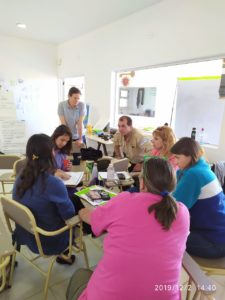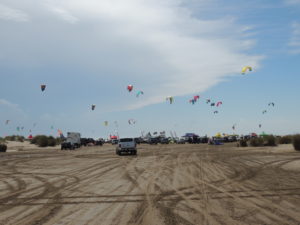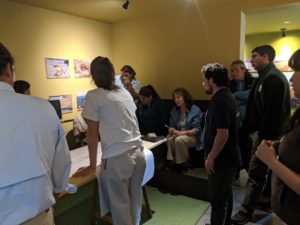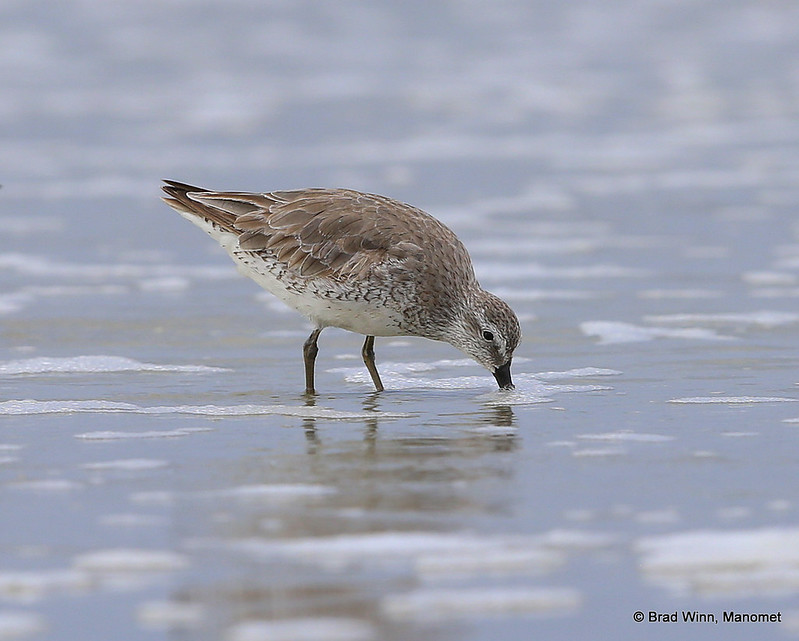From Canada to Tierra del Fuego, shorebirds use the beaches of the Atlantic coast for nesting, feeding, and resting. Unfortunately many of these beaches are also popular with human communities. Disturbance to shorebirds is one of the main threats identified in the Atlantic Flyway Shorebird Initiative (AFSI) Business Plan. Unfortunately, behavior change cannot always be achieved just by increasing the knowledge of beach visitors – additional actions may be required. With many AFSI partners working to reduce the impacts of this threat, a vast set of best practices and resources has been developed and made available in the Guidance and Best Practices for Evaluating and Managing Human Disturbances to Migrating Shorebirds.
Deploying these best practices can take time, be a complex process, and involve many different types of stakeholders, as partners at the Río Gallegos Estuary and Bahía Samborombón Western Hemisphere Shorebird Reserve Network (WHSRN) sites in Argentina can attest. Both of these sites have been working to understand and address disturbance issues caused by human recreation. Through workshops, tools, and mentoring, staff from the WHSRN Executive Office and Manomet’s Habitat Management Division have collaborated with site partners to provide capacity-building opportunities, facilitate stakeholder engagement, and support action planning.

A group of participants at the Punta Rasa workshop discuss the key audiences that they need work with. Marcela Castellino
In December 2019, both sites took a next step to address disturbance by organizing community engagement workshops in partnership with the WHSRN Executive Office. In a community engagement workshop, partners work together to develop a plan of action tailored specifically for the site. They discuss the audiences that use the same coastal areas as shorebirds, the barriers and motivators that influence behavior change, the best strategies to engage the audiences, and methods to evaluate the effects of conservation efforts.
Bahía Samborombón
rufa Red Knot (Calidris canutus rufa) compete for space with kite surfers and vehicle drivers on the beach at Punta Rasa, protected natural area of the province of Buenos Aires located at the southern end of the Bahía Samborombón, and near the popular tourist town of San Clemente del Tuyú. A 2017 Habitat Management Workshop provided a platform to discuss shorebird conservation needs among diverse stakeholders and researchers working at the site and in the region. A Good Governance workshop held in 2018 helped establish consensus to work on specific recreation use areas and critical shorebird habitat. The agreements developed with the local kite schools and driving groups have been successful in shifting large recreation events away from the critical habitat area.
However, individual residents and tourists that are not associated with the groups or schools have continued their activities in the designated critical habitat. During 1-2 December 2019, the WHSRN Executive Office and the Organismo Provincial para el Desarrollo Sostenible (OPDS) coordinated a Community Engagement workshop in San Clemente del Tuyú to develop an action plan to improve implementation and compliance of the use zones. “The workshop allowed us to give continuity to the actions of the Good Governance workshop, by engaging stakeholders to learn more about their interests and needs, and to collaborate with them in the implementation of the conservation actions [from the good governance workshop]” said Melina Lunardelli, park ranger of the Bahía Samborombón Conservation Unit, OPDS.

Kite surfing is a popular activity at the San Clemente beach resort town which can mean tough competition Red Knots looking for a rest. Melina Lunardelli
Participants identified one of the primary barriers to compliance to be a lack of knowledge of where and when the zones are in effect. The priority strategy was to provide signs and other demarcation to distinguish the Punta Rasa critical habitat area from the mixed use area of the beach. This strategy will include specific information on the types of activities allowed, timing of seasonal closures, and alternative locations for activities. Where feasible, art will be incorporated to provide positive and empowering messages. OPDS will collaborate with tourism businesses and government agencies to establish these zones and develop a campaign to promote shared and responsible use of the beach.
A second component of the action plan was to build community support by celebrating wildlife t through school activities, festivals, murals and other art, and mascots for community parties (murga). The area to be zoned is part of the Rincón de Ajó Natural Provincial Reserve and does not require community permission for implementation. However community support will improve compliance and minimize distrust and resentment towards the Reserve.
Río Gallegos Estuary
At the Río Gallegos Estuary WHSRN site, which includes both Urban and Provincial Reserves, a Habitat Management workshop was held in November 2018 to identify threats, discuss potential actions, and increase capacity for monitoring and habitat management. Disturbance (human and loose dogs) was identified as a key threat to shorebirds.
A Community Engagement Workshop was coordinated by the WHSRN Executive Office and Ambiente Sur during 4-5 December 2019* to take the next step in reducing disturbance. Participants in the workshop included staff from the environmental agency of the municipality, fisherman clubs, civil society organizations, tourism and cultural agencies from the municipality, education organization, operators of tourism-related businesses, and educators.

Stakeholders at Río Gallegos outline the next steps for addressing disturbance at the WHSRN site. Laura Chamberlin
Participants agreed that zones for different activities are needed in the reserves including fishing, walking, driving, and wildlife-only. However, before zoning could be proposed, more information was needed about the beach users, their activities, timing of use, and their perceptions of conservation Ambiente Sur conducted disturbance surveys and interviews during the austral summer (December 2019 to –March 2020). The results are currently being analyzed and will provide a site-specific understanding of the main uses and disturbances that occur in the Reserves. These data will directly strengthen existing conservation and education measures, and future implementation of the action plan.
Ambiente Sur will also work with workshop participants to strengthen communication strategies between stakeholders, improve implementation of current regulations, and prepare for a Good Governance Workshop to build consensus for zones for different activities.
“Without a doubt, the participation of different stakeholders [in the Community Engagement workshop] was key for this process. This allowed for greater commitment and involvement of the parties in order to achieve good management of the Rio Gallegos Estuary.” shared Germán Montero, Executive Director, Ambiente Sur.
The current Covid-19 pandemic crisis has stalled actions at both sites, but site partners are looking at ways to work remotely with stakeholders on planning and design. There are also significant funding needs to implement activities, and they are exploring opportunities for fundraising.
Both Community Engagement workshops were made possible thanks to a grant from the Neotropical Migratory Bird Conservation Act (grant F18AP00619). The surveys at Rio Gallegos were funded by National Fish and Wildlife Foundation, Bobolink Foundation BAND Foundation.
For more information contact Laura Chamberlin, Community Engagement Specialist, WHSRN Executive Office – Manomet or Marcela Castellino, Conservation Specialist, WHSRN Executive Office – Manomet, Argentina. To learn more about site services from the WHSRN Executive Office and Manomet visit whsrn.org and manomet.org.
Bahía Samborobón – Melina Lunardelli, Encargada RNOD Rincón de Ajo, ANP/OPDS melinalunardelli@hotmail.com
Estuario del Río Gallegos – Germán Montero, Director Asociación Ambiente Sur aambiente.sur@gmail.com

